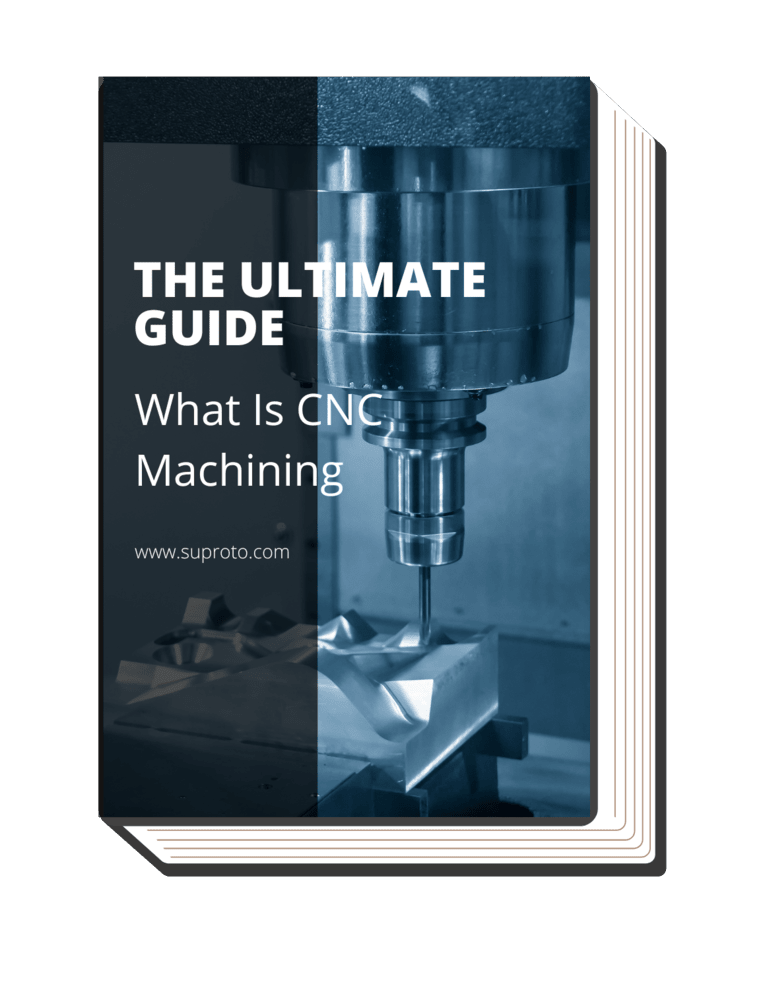Have you ever wondered how precision parts, intricate shapes, or complex geometries are produced in industries ranging from automotive to aeronautics? As you navigate the realms of production, design, or even general curiosity, one question emerges—what is CNC milling?
CNC milling is a computer-controlled process involving the use of a cutting tool to remove part of a workpiece. In this article, we delve deep into the world of CNC milling, helping you to understand its intricacies and the profound impact it has on the manufacturing industry.
So, read on to join us on this journey of discovery!
1. Brief Overview of CNC Milling
CNC milling is an advanced manufacturing process where a computer guides machines using programming codes to manufacture a product. In essence, the process involves the use of a computer to control and supervise the movements of a milling machine. This milling machine can move along multiple axes and adjust the speed and pressure of its rotary cutters, providing unprecedented flexibility in creating complex and precision parts.
Considered a subtractive manufacturing process, CNC milling begins with a solid block of material (the workpiece). Tools, such as drills, mills, and lathes, chip away at this workpiece until the desired product forms. The precision and repeatability of this process surpass those of manually controlled machines, transforming the manufacturing industry and broadening its horizons.
As an expert in CNC milling, I am continually fascinated by the capability of these machines. Their potential extends beyond just replacing manual labour – they open new doors to innovation and design.
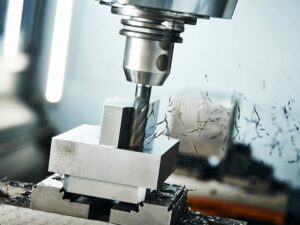
2. History and Evolution of CNC Milling
Before exploring the timeline of CNC milling, let’s set the stage for the journey this revolutionary technology has traversed. Born from the need to enhance precision and productivity in manufacturing, CNC milling has evolved tremendously from its inception in the mid-20th century. It has continued to adapt to technological advancements, becoming an integral part of the modern manufacturing landscape.
Here’s a table of the evolution of CNC (Computer Numerical Control) machining that is widely used in today’s generation:
| Year/Period |
Event |
| 1940s |
The roots of CNC machining can be traced back to this decade when American engineer John T. Parsons and his team developed the concept of numerical control (NC) to meet the complexity of manufacturing rotor blades for helicopters. They used punched cards to guide machine tools, increasing manufacturing precision. |
| 1952 |
The first CNC machine was introduced in the form of the Cincinnati Milacron Hydrotel. |
| Late 1950s |
The term Computer Numerical Control (CNC) emerged. MIT and the US Air Force collaborated on a project to improve manufacturing efficiency and accuracy, which led to the development of the first CNC machine. |
| Post 1950s-Now |
With the advent of CNC, manufacturing underwent a radical transformation, making the process more precise, fast, and efficient. CNC machines have been constantly updated with advanced features like CAD and CAM integration. The machines have also become smaller, less expensive, and more accessible. |
| Future |
The future of CNC technology is expected to see even more advancements, possibly with the integration of more sophisticated robotics systems and artificial intelligence, further improving productivity and reducing labor requirements. |
It’s interesting to note that CNC machining has evolved from large, cumbersome, and expensive machines used for military applications in the 1940s and 1950s to more compact, precise, and affordable tools that are now used in various industries, including aerospace, health, automotive, consumer electronics, and more.
3. Key Features and Capabilities of CNC Milling Machines
Diving into the world of CNC milling, we are greeted by an array of impressive capabilities and features. From ultra-precise accuracy to extensive automation, CNC milling machines epitomize modern manufacturing technology. Let’s explore some of their key features:
Precision and Accuracy
CNC milling machines are renowned for their exceptional precision. The computer-controlled operations allow for incredibly accurate cuts, often achieving tolerances between +/- 0.001 in. to +/- 0.005 in(1). This level of accuracy is crucial in industries like aerospace and automotive where even the smallest error can have significant consequences.
Automation and Consistency
Thanks to computer programming, CNC milling machines can run autonomously, only requiring input for setup and design. This automation ensures consistency, producing identical parts every time, a key advantage when mass-producing items. An example that resonates with me is the use of CNC milling in the aerospace industry, where parts must meet incredibly tight tolerances for safety reasons.
Flexibility and Versatility
CNC milling machines are capable of creating complex parts with ease, owing to their ability to move along multiple axes. This flexibility makes CNC milling suitable for various materials, from metals to plastics, opening the doors to a multitude of industries. From my years of experience in the field, I can personally attest to the versatility of CNC milling machines that have always left me in awe, making the possibilities seem endless.
High Production and Scalability
High production rates and scalability are defining features of CNC milling machines. These machines can work around the clock, offering high-speed production. They are equally efficient for one-off custom parts and medium-volume productions, offering a scalable solution for varying demands.
Reduced Labor Costs
As CNC milling machines are largely automated, they require less human intervention, leading to a reduction in labor costs. Here’s the interesting part, where there’s innovation, there’s room for everyone to prosper. This is a considerable advantage in large-scale production, where costs can quickly add up.
4. Types of CNC Milling Machines
When we discuss CNC milling, it’s essential to realize that this broad term encapsulates a variety of machines, each with unique capabilities and features. The versatility of this technology is truly impressive, with machines tailored to different applications. Let’s explore some key types of CNC milling machines:
Vertical milling machines
These machines feature a vertically oriented spindle axis, where the cutting tool moves up and down. They’re most suitable for die sinking and related work. When the chips fly, you know you’re on the path to creating something truly special. The vertical orientation allows for more detailed work and is often the go-to choice for individual parts and smaller productions.
Horizontal milling machines
As the name suggests, horizontal milling machines have horizontally oriented spindles. They are usually used for heavy-duty operations, such as slot cutting and large material removal. Their structure allows for the simultaneous use of multiple cutters, which makes them perfect for high-volume production.
Multi-axis machines
Today’s multi-axis CNC milling machines have a broad range of features and CNC milling parts, which increases their value and capability as stated by MITechNews. This allows for increased flexibility and the ability to create complex parts with a high degree of precision.
Multi-axis machines, such as 5-axis machines, have opened up new possibilities in intricate and precise part production. Personally, I’ve always found multi-axis machines particularly fascinating its capacity to turn a raw piece of material into a complex, intricate part never ceases to amaze me.
5. CNC Milling Operations
CNC milling is a robust technique that employs computerized controls and rotating cutting tools to progressively shape a workpiece. This process is integral in numerous industries and is noted for its precision and versatility. Below are some common operations performed by a CNC milling machine:
Drilling
Drilling is a milling operation that involves creating round holes in the workpiece. This is achieved by plunging a rotating drill bit into the material. This operation is highly accurate and can be performed on both flat and cylindrical surfaces. It is widely used in creating holes for bolts or screws in assemblies.
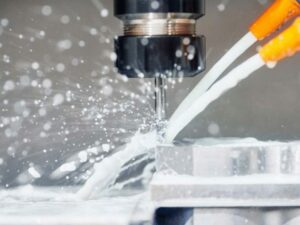
Boring
Boring is the operation that enlarges pre-drilled holes using a single-point cutting tool. It improves the concentricity and diameter accuracy of the hole. Boring is often used when precision is crucial, as in the case of engine cylinders in the automotive industry. By leveraging Suproto’s industry-leading technology, the standard for precision is being redefined.
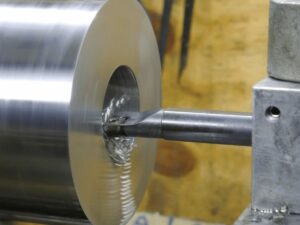
Turning
In the context of CNC milling machines, turning refers to the process where the workpiece is rotated while the cutting tool moves in linear motion. This operation is commonly employed in making shafts or objects with a circular cross section. It’s all about making every rotation count to bring out the beauty hidden in raw materials.
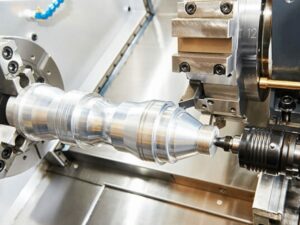
Face Milling
Face milling is a process where the cutting is done at the end of the mill, hence the name. It’s primarily used to create flat surfaces and contours on the workpiece. The automotive industry frequently uses this operation to ensure flat surfaces for perfect fitting of components.
An example of this is in the production of engine blocks, where face milling is used to ensure flat surfaces for the perfect fitting of various components. I’ve always admired the beauty of face milling, its ability to create flat and smooth surfaces from a rough workpiece is truly a marvel of modern engineering.

6. Materials Suitable for CNC Milling
According to Thomas Net, CNC milling machines are capable of working with a wide array of materials, shaping them into custom-designed parts and products. From metals to plastics, they have the versatility to tackle different materials with ease. Here are some materials suitable for CNC milling:
| Material Category |
Examples |
Key Characteristics |
| Metals |
Steel, Aluminum, Brass |
High strength, durability, prone to corrosion |
| Plastics |
PVC, Nylon, Acrylic |
Lightweight, resistant to moisture and chemicals, good insulating properties |
| Composites |
Fiberglass, Carbon fiber, Wood-Plastic Composites (WPCs) |
Composed of two or more materials, combines the best properties of the constituent materials, strong and lightweight, can be engineered for specific applications |
| Wood and foam |
Wood, foam composites with metals |
Wood is natural, renewable, and versatile. Foam composites can have high porosity, making them lightweight and strong. |
I want you to take note that the table above shows broad categories and the exact properties of specific materials can vary greatly depending on their specific compositions and processing. The properties of a composite like fiberglass are largely determined by the types and proportions of its constituent materials, which include a polymer matrix and glass fiber reinforcements.
7. Applications of CNC Milling in Various Industries
According to The Insight Partners, the CNC milling machines market is expected to register an incremental growth value of US$ 5,803.51 million from 2023 to 2028, emphasizing the increasing reliance of various industries on this technology. CNC milling, with its high precision and efficiency, has found diverse applications across numerous industries. Here are the ff industries where cnc milling is commonly used:
Automotive industry
CNC milling is vital in the automotive industry for producing complex and custom-designed parts such as engine components, creating prototypes, and facilitating mass production. The growth of this sector significantly contributes to the rise of the CNC milling machine market. From my experience, the automotive sector consistently presents innovative challenges that test the flexibility and precision of CNC milling.

Aerospace and Defense industry
The aerospace and defense industry highly values CNC milling for its precision, critical for manufacturing parts such as turbine components and airframes. The need for highly reliable and accurate parts in this industry is a significant factor driving the demand for advanced CNC milling machines. The precision and consistency of CNC milling are critical for creating high-strength, lightweight parts, ensuring the reliability and safety of aircrafts.
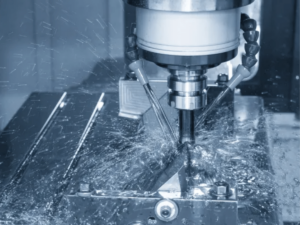
Medical industry
CNC milling is essential in the medical industry for manufacturing complex, custom devices such as orthopedic implants and surgical instruments. The increasing demand for precision instruments in healthcare promotes growth in the CNC milling machines market. With Suproto at the heart of the process, we’re enabling advancements in health with every precise cut.
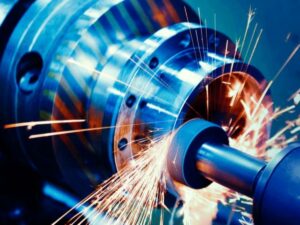
Consumer Electronics
The consumer electronics industry extensively uses CNC milling to produce parts with high precision and intricate designs, such as circuit boards and device casings. The consistent demand for consumer electronics globally drives the growth of CNC milling applications.

Construction industry
In the construction industry, CNC milling machines create custom fixtures, fittings, and other building components. As the sector continues to grow, so does the demand for precise, durable parts created with CNC milling. Building has always been an art; today, we’re simply using more sophisticated tools.
Arts and Crafts
In arts and crafts, CNC milling machines allow artists and craftsmen to create intricate designs with precision, from sculptures to fine jewelry. The rising interest in personalized, unique art pieces contributes to the growth of CNC milling applications in this sector.
Dive Deeper Into Our Resources
For some insightful reads, we’ve curated a list of recommended articles just for you:
Still haven’t found what you’re looking for? Don’t hesitate to contact us. We’re available around the clock to assist you.
Conclusion
Now that you have a grasp of what CNC milling is and how it permeates modern manufacturing, we encourage you to get hands-on with it. Its ability to handle different materials like aluminum, plastic, wood, and glass, and deliver parts with exceptionally high tolerances underscores its undeniable role in today’s manufacturing landscape.
If you have a project in mind that could benefit from this technology, or if you simply want to learn more about it, don’t hesitate to contact us. We’d be more than happy to share our passion for CNC milling and how it’s revolutionizing industries one cut at a time.









